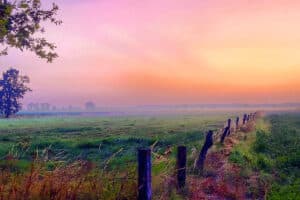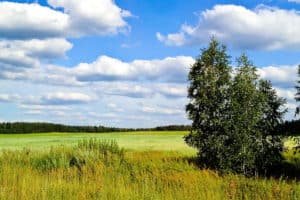Let’s start with a definition: “Current Use” is a state-specific property tax reduction program in which landowners with qualifying forests or farms can get a significant annual tax break if enrolled. The primary benefits to the landowner are the reduced property taxes which can help you hold on to your property. The public benefits are preservation of open space, maintenance of clean air and water, and reduction of habitat fragmentation.
Each state has its own requirements and qualifications. It’s important to work with a professional forester and real estate agent who can help you navigate the process, requirements, and commitments. Determining if Current Use enrollment is right for you and your property depends on many factors. Here’s some guidance to help you make an informed decision:
- You’re a long-term timberland investor – Large acreage, northeast forestland is considered a long-term asset. Minimizing annual holding costs like property taxes can significantly improve your bottom line investment returns. If you’re considering a holding period of a couple of decades, value of that savings over time is certainly amplified. Low property taxes, coupled with smart, sustainable forest management, can make a world of difference.
- You’re purchasing a large acreage, forested recreational property – Let’s say you purchased several hundred acres of great hunting land in the northeast with a nice long-term timber component. The property taxes are considerably higher than you’d prefer, and you want to keep this land for the long haul to pass down to your heirs. In consultation with a forester, you learn that the upfront investment of a few thousand dollars will be re-captured through property tax savings within just a handful of years. Go for it!
- You own a small rural property where the taxes aren’t too bad – In New York, for example, the 480a Forest Tax Program enrollment requires a management plan, inventory, and boundary line work which could cost a few thousand dollars on the front end. If the property taxes are already manageable and the savings might be less than the upfront cost, then it might not make sense from a financial perspective to enroll. However, you may choose to do so for conservation or environmental reasons.
- The property is located in a heavily populated area with strong potential as developmental land – If your investment strategy here is to capitalize on these factors, you need detailed information, expertise, a keen understanding of the property’s potential, and a realistic view of the market. We strongly recommend working with an experienced, professional land broker who knows the market inside and out and can help you make insightful, data-informed decisions.
Current Use can be a great win-win for everyone – open space, clean water, sustainable forestry and lower property taxes. However, each property and landowner is unique. Consult with your forester and real estate professional and get to know the details of the program so you can make an informed decision.
Written by Todd Waldron, a professional forester and timberland broker with Fountains Land, who has served timberland owners and buyers in the northeast since 1996.
This content may not be used or reproduced in any manner whatsoever, in part or in whole, without written permission of LANDTHINK. Use of this content without permission is a violation of federal copyright law. The articles, posts, comments, opinions and information provided by LANDTHINK are for informational and research purposes only and DOES NOT substitute or coincide with the advice of an attorney, accountant, real estate broker or any other licensed real estate professional. LANDTHINK strongly advises visitors and readers to seek their own professional guidance and advice related to buying, investing in or selling real estate.










Add Comment